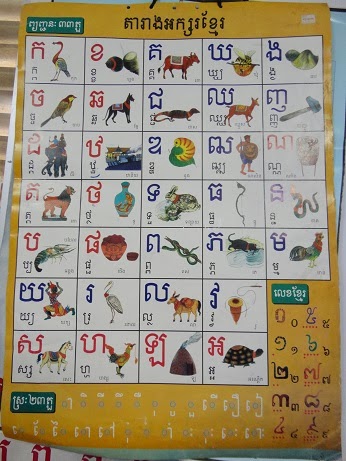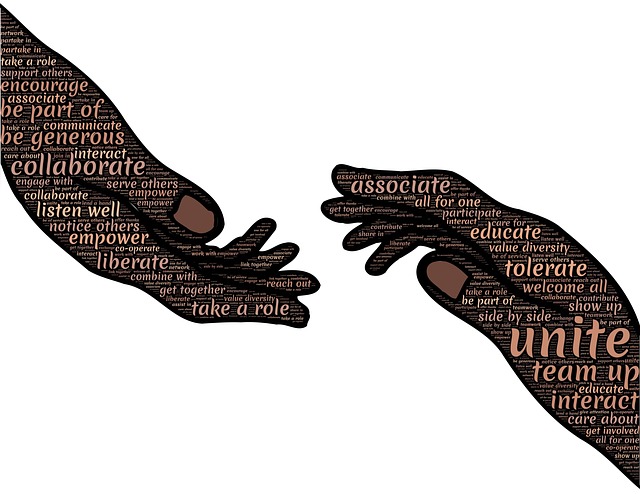Experienced presenters demystify the MELEd conference proposal and presentation process.
Have you presented at conferences so many times that you’ve lost track? Or does presenting seem, maybe, a little daunting?
If you answered yes to the first question, this article is not for you. Go do something else.
If, however, you have appreciated and learned from conference presentations, feel it is time for you to jump in and give back, and would like a little more encouragement and a few tips, keep reading. This article is for you!
Getting Started
If you have never, or rarely, presented, the Minnesota English Learner Education Conference, or MELEd, is a great place to start. It’s a friendly audience, and they only want to see you succeed.
You don’t have to have done cutting edge research or have a teaching technique that will revolutionize the field. You just have to have a good idea. MELEd attendees are curious people, and they want to know what’s working in your classroom, what you learned doing your graduate school research, how your efforts at advocacy worked out, what you learned during a trip to, or work in, countries where Minnesota students come from but westerners rarely visit, or, well, the list is endless. Once you have your idea, you need to make another decision, and that is whether to present by yourself or with a friend or coworker. There are advantages to both. The experience of collaboration is a powerful one, and you can edit and encourage each other. Oh, and you can share the workload. On the other hand, presenting by yourself can be just the thing. If you have enough to say on your own, go ahead. It can feel good to make all the decisions yourself.
What type of presentation?
Your next decision is what type of presentation to do.
One option is a paper, and those are presented in 20 minute time slots. This can be a research paper or a report on an action research project, or your capstone or thesis. It is more likely to be accepted if there is a direct relevance for Minnesota teachers. Also, don’t forget that the paper should include how your results can be applied to the classroom.
One way to go is a presentation/demonstration. This is an opportunity to show or describe a technique or experience. These can be for 20 minutes, but are usually 50 minutes.
Panels and workshops are other possibilities, and these are 50 minutes long. A panel is a nice way to get 3 to 5 people together to discuss a topic from various angles. (Too many people on a panel usually means that discussion time becomes limited.) A workshop is an opportunity for hands-on experience. There will be much more audience involvement in a workshop, and attendees have the opportunity to adapt the ideas and materials in ways that will be immediately useful for their individual situations.
Writing the proposal
Once you’ve made the above decisions, it is time to write your proposal, and here are a few helpful hints.
Obviously, you’ll need a title. Snappy and cute can get everyone’s attention, so don’t be shy if that’s your style. Which title best gets your attention: Teaching about Commas or How my Students Learned to Stop Worrying and Love the Comma? But don’t worry if you’re not ready for a BuzzFeedworthy title. Both are good. This is because they both clearly tell the reader what the talk will be about. On the other hand, submissions have lost points when titles either don’t describe what the presentation will be about, or when they have acronyms, jargon, or cultural references that might be known only to a targeted interest group.
Next, you need to choose which interest group your presentation will appeal to.
The primary interest group you choose determines who will review your submission, so choose carefully. The proposal committee may override the designation when they feel teachers from one of the other groups will have more interest in the session, but this is a rare occurrence.
You also need a short description (called a program summary) of your presentation that will go in the program brochure. This is your chance to sell your presentation once you have the attention (which can be quite brief!) of the conference attendees. Be concise in your description of what the program will cover and what the attendees will get out of it.
Along with your program summary, you will be asked to submit a short biography. This won’t be read until later, so it does not affect the chances of having your proposal accepted. However, it’s nice to write it in standard form. Unless you’re the plenary speaker (and therefore not reading this article), it should not be more than three sentences. Typically, presenters mention their ESL degree, and where it’s from, tell where they are working, and maybe one more piece of illuminating information. They might mention an area of particular interest, or say that this is their capstone paper, or maybe refer to an experience, such as a Fulbright in Tanzania, that will be a conversation starter at lunch. You should write your biography in the third person. It’s perfectly fine to indicate you might be on the job market by saying, for example, “currently substitute teaching in the St. Paul Schools,” or “will complete her MA in TESOL at the University of Minnesota in July 2016.” Check out this previous program for more biography examples.
The heart of the proposal: the abstract
The heart of the proposal is the abstract. There is a word limit, and you should think of this as a goal. Abstracts that are short don’t give enough information, and are more likely to be rejected. They also can be a hint that the writer waited till the last minute to send it in, and the committee might wonder if this is a habit, and if so, perhaps the quality of the presentation might be less than it could be.
The typical successful abstract has two parts. The first part describes a problem or a situation. If you are citing published work, please give it credit. Here is an example of a citation from an accepted proposal: As defined by Gloria Ladson-Billings (1995). But if your talk isn’t “scholarly” in that way, don’t worry. This conference is for practitioners as well as scholars. Also, if you are using acronyms besides the most common in the field, write them out the first time and define them briefly: Culturally Relevant Pedagogy (CRP) is a theoretical model that addresses student achievement, helps students to accept and affirm their cultural identities and develops critical perspectives that challenge inequities that schools (and other institutions) perpetuate.
The second part of the abstract is where you write about your solution to the problem, or what you did in the classroom, or what you learned from your research. Your abstract will explain how your presentation will proceed, and finish with what the attendees will get out of your presentation. This is typically teaching suggestions and a handout with more resources. Again, remember that relevance to a Minnesota-based audience of educators is a plus, so tie it in. If you want to talk about your Fulbright and what you learned, that’s fine. But explain how the attendees can get their own overseas experiences, and how that opportunity will enrich their teaching. If your research project was how EFL students in Taiwan use commas, include how this new knowledge informs your teaching in Minnesota.
One last caveat about the abstract: You should never, ever identify yourself or give so many clues that your identity is obvious. It’s fine to say that the presenter is basing her talk on her ten years teaching middle school, but not OK to say that she is basing her talk on her ten years teaching at Poppyseed Bagel Middle School. Abstracts that identify the presenter are automatically disqualified.
Your abstract is the make or break of the proposal. As such, you want it to be the best it can be. In addition to it being thorough, you want it to be well written. Check to see if you’ve covered all the points. Read it aloud, and see how it sounds. Send it to a friend for comments. (Even very experienced presenters do this!) Proofread it. Go walk around a lake and proofread it again. Get a good night’s sleep, and read it again. Some people swear that reading from back to front is a great way to weed out pernicious typos. Another technique is to turn off autocorrect. And then remember, the readers aren’t meanies, and a typo or two won’t derail the proposal. Relax. Submit. Eat some ice cream.
The Proposal Review
Once all the proposals are in, the committee chairs send them to the interest section readers for a blind reading, which means that the readers don’t know who the author is. Usually this is to the interest section you have chosen, but occasionally they send it to the second one you’ve mentioned if they think it might be more relevant. Each proposal is read by three readers, one of whom has agreed to be the lead reader. They score it using a rubric, adapted by MinneTESOL members from the TESOL rubric, with three criteria: 1) title and abstract are clearly written, 2) the topic is relevant, interesting, and useful to all or some attendees, and 3) the session is based on best practice, adds to foundational knowledge, or presents current research.
When all the readers have sent in their evaluations, which include comments, the committee chairs collate the results and schedule a lead reader meeting. The committee chairs do not vote, especially as they are the only ones in the room for whom the reading is not blind. By consensus, proposals that have a total score over a given number will be automatically accepted, and those below a certain point will be rejected.
Now, the chairs make a chart showing how many proposals for each interest section have been accepted, as a balance representative of the conference attendees is desirable. The other important pieces of information are how many time slots remain, and how many proposals are left to fill them. With the chart projected on the wall, the discussion begins. The lead readers look over the abstracts (and remember, this is still a blind reading) and discuss which ones are most likely to result in good sessions and will appeal to the attendees. When the slots are filled, it’s time to notify the presenters.
You will know by midsummer if your proposal has been accepted. This will give you time to prepare a great presentation. Here are some hints to get you started.
Preparing the Presentation
The first hint is the most obvious: Don’t wait until the last minute. An early start will give you time to reflect and improve your session. It also means that if something comes up the weekend before the conference, you won’t be in a panic. Starting early is especially important if you’re co-presenting.
As you design your session, you can think of your abstract as something of an outline. You will want to describe a before and an after. What was the situation or problem, what did you do, and what were the results? What did you choose to research, and why, what did you learn, and what are the teaching implications?
- Check out presentations from past years for ideas.
Wordy slides are hard to read and a distraction. Keep them simple, and plan to impart the details orally. Make sure your contact information is on both the first and last slide. It’s also nice to have a handout with your contact information and information about resources. Some people print out their slideshow as well, or at least some slides, for their handout, but that’s certainly not necessary. Finally, for your own use, it’s a good idea to print out the slides and your speaker notes.
Your audience will love to see examples of student work, but remember it should not have their last names, and you need their (or their guardian’s) permission to share.
- Here is a link to a permission template.
Once you have the slideshow more or less ready, start practicing. You will want to be able to present without looking constantly at your computer or the screen, and with only an occasional glance at your notes. As you practice, you will often realize you need to continue amending the slides, so aren’t you glad you didn’t wait till the last minute? Practice with someone. Time yourself. Remind yourself to speak slowly. Remember that those nice short sentences and bullet points on the slides will allow you to avoid DbPPt (Death by PowerPoint). You won’t be reading aloud an increasingly dry text you will be speaking conversationally and confidently to a very friendly audience!
Conference Day!
Now, the conference day is here. Bring your notes, your handouts, your computer, and if it’s a Mac, your device to attach it to the LCD projector. Have your slides stored in at least two places, if not three: a flash drive, your computer, or in the cloud. Get to the room you’ll be presenting in early enough to set up your computer and make sure everything is working. Ask for help as soon as you suspect there’s an issue with technology. If the conference tech person is fiddling around with your computer and the projector, you won’t know if the fix will be in one minute or more. So start your presentation without the slides. It’s a good thing you practiced, have your notes, and know the material so well!
You should start as close to your assigned time as possible. Leave the handouts in the back, so stragglers can pick them up as they enter. And speaking of stragglers, don’t worry about how many people come, or even about the inevitable few who sneak out. There are too many variables about why a conference attendee chooses one session over another so simply celebrate the ones who are there. Keep an eye on the time so you can finish up (always with a smile and a thank you) with five minutes or so for questions.
Those are the basics. Now is a good time to think about what you might present at the next MELEd conference.
Preparing a presentation always leads to valuable reflection and learning; as experienced presenters we can safely say that we’ve learned and gained new insight into our teaching from the process of preparing each and every presentation. Moreover, presenting at a conference is a great way to share your ideas, research, experiences, and insights. Teachers are a friendly audience, and people really do want to know what you do!











